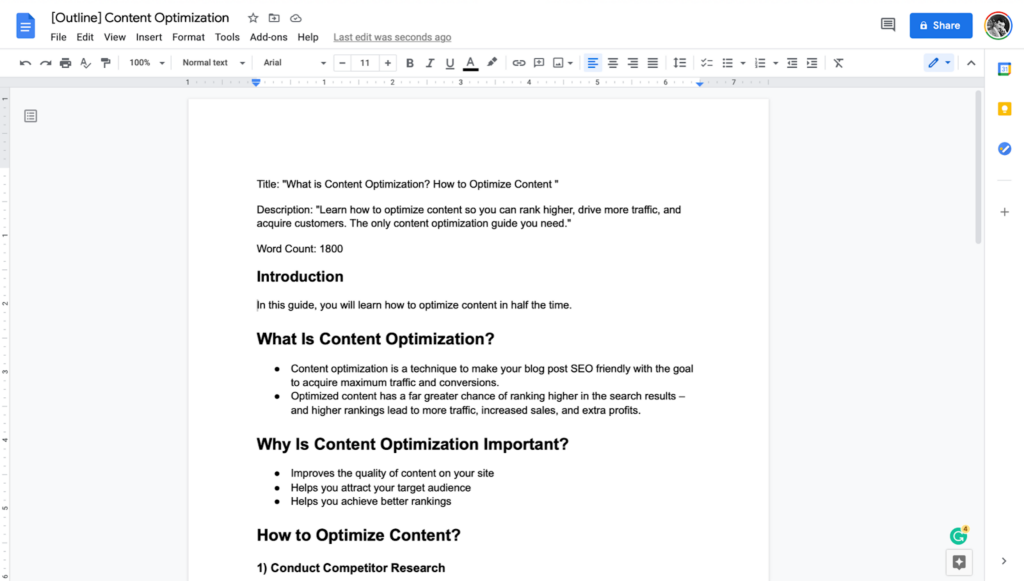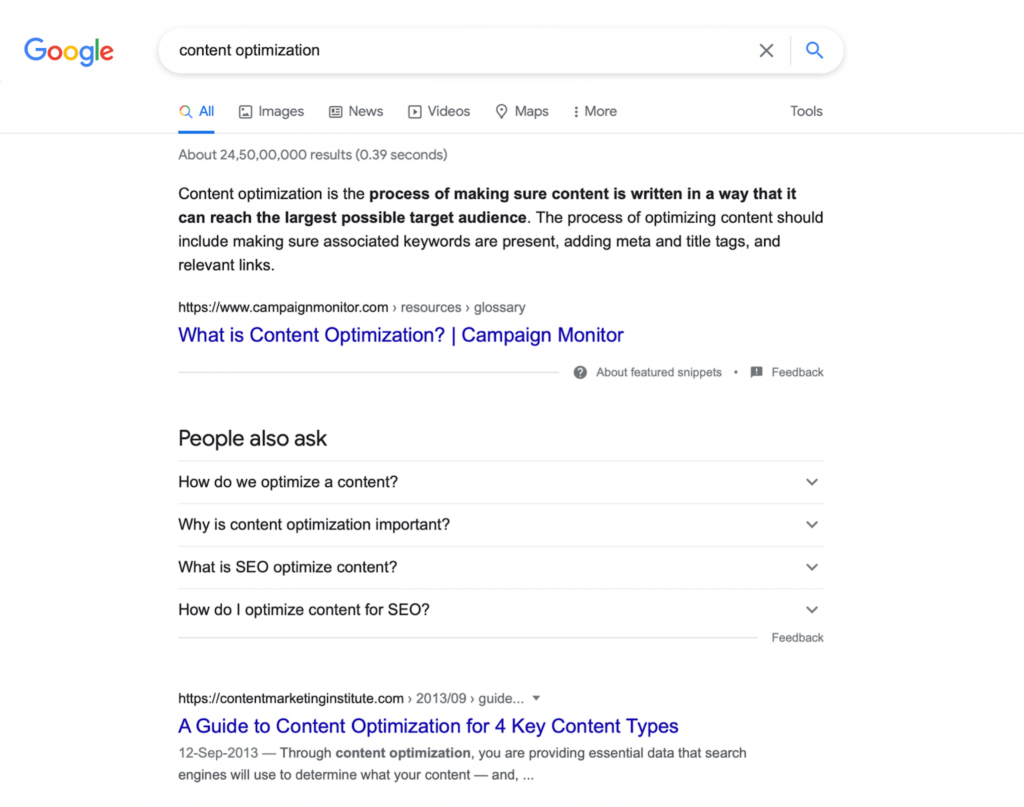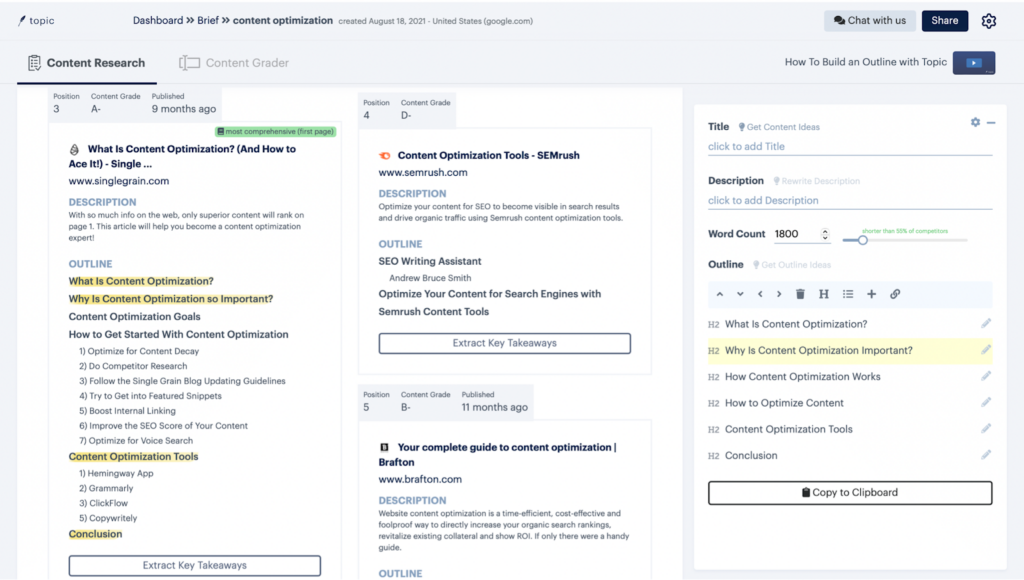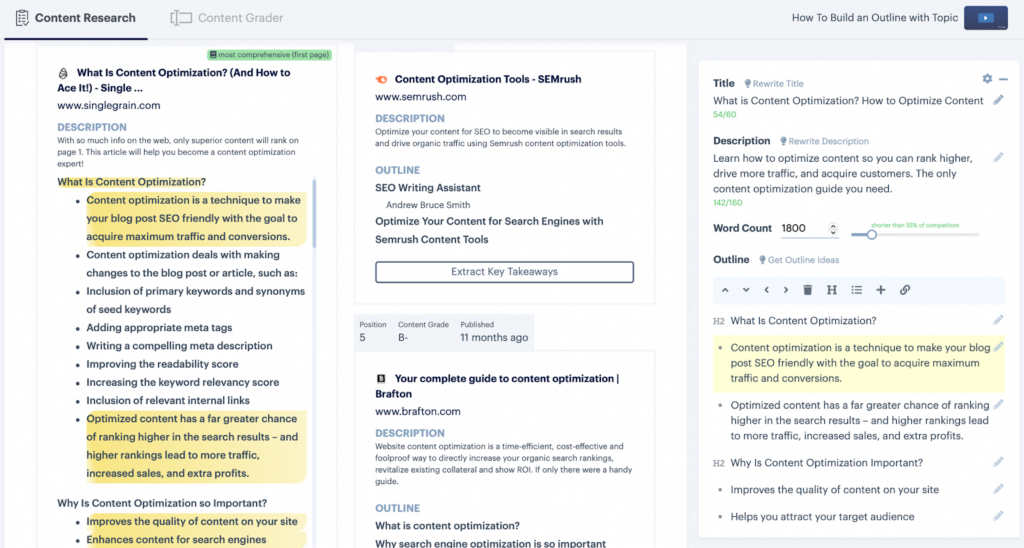Are you striving to expand your digital presence and create a dedicated audience for your business or field? Content outlines can help you do just that. Creating content that resonates with readers is made simpler by utilizing content outlines. But what exactly are they, and why should you use them for SEO and marketing?
In this article, we’ll explain the importance of content outlines in detail, how to create an effective one, the types of informational structures available for creating a great outline, and best practices for optimizing it. So if you’re ready to take your website or blog up a notch with optimized content – let’s dive into the world of content outlines.
What is a Content Outline?
A content outline is a roadmap for creating an article or blog post. It provides structure and direction to the writing process, helping you stay focused on your topic while ensuring that all necessary information is included.

Essential Components Of Any Content Outline
Additionally, headings can help search engine optimization (SEO) efforts by providing keywords for Google algorithms to index when people search for related terms online.
If there are already numerous articles covering the same subject matter as yours, then you’ll need an angle that sets yours apart from the rest – something unique that will draw readers’ attention and make them want more from your piece than they would get elsewhere.
This could include using different language or examples than other writers have used before; researching new facts or figures; interviewing experts; etc.
How Content Outlines Help?
Content outlines are essential tools for any content creator. Not only do they help you organize your thoughts and ideas, but they also guarantee that you include important elements for search engine optimization (SEO).
When creating engaging content, an outline can be a lifesaver.
Improve The Flow Of Your Article
An outline helps improve the flow of your article before you start writing – this way, when you sit down to write the piece, all of your ideas are organised logically.
This will ensure your readers don’t get lost or confused while reading the article.
Gives More Confidence
An outline gives writers more confidence as they know exactly what points must be included in their work.
Using content outlines is also great for scaling up content creation efforts.
For example, suppose you have multiple writers working on different pieces of content simultaneously. Each writer can access the same template or style guide outlining how articles should be structured and formatted. In that case, it becomes easier for them to create consistent quality pieces quickly and efficiently without compromising quality or accuracy.
Produce Content That Drives Traffic
Outlines help you create content that drives traffic because it matches your audience’s needs. You are no longer producing random content but rather relevant content that people will want to read.
If you supplement your content outline with some SEO elements.
Allows To Identify Gaps In Information Easily
Using a content outline allows editors to easily identify gaps in information or areas where additional research needs to be done before publishing the final version of an article.
Having everything laid out clearly from the beginning makes it easier for editors to spot mistakes and ensure that every piece meets its intended purpose, with no room left open for misinterpretation by readers later on down the line.
Scale Content Creation
It takes time to create great content. A blog post took a writer 4 hours to write in 2020:

A well-defined content outline can save you hours for writing and optimizing your blog post.
If you want to delegate content creation, content outlines are useful.
Here is my favorite Ahrefs Content Outline Template I recently found online.
How to Create a Content Outline (The Easy 5 Steps)?
You now understand a content outline and why you should create one. Now comes the exciting part. Making a content outline from the ground up.
Here are the five steps I take to create content outlines quickly:
Step 1: Examine The Search Intent
Search intent is why someone enters a particular query into a search engine. By analyzing the search intent of your target keywords, you can create content that meets user needs and ranks higher in SERPs (search engine result pages).
It can be broken down into four categories:
Navigational searches are used when people are looking for specific websites or webpages. For example, if someone types “Facebook” into Google, they are likely trying to find Facebook’s homepage.
When creating content around navigational queries, you should provide accurate information about where users can find what they’re looking for quickly and easily.
Informational searches occur when people want to learn more about something or gain knowledge on a topic, such as “how to make pizza dough from scratch?” To create content around these queries, you must provide detailed answers with step-by-step instructions that help readers understand how to complete the task.
Transactional searches happen when people are ready to buy something like “buy Nike shoes online” or book an appointment like “dentist near me”.
Your goal here should be helping them take action by providing helpful product reviews and recommendations along with contact information for businesses in their area so they can make an informed decision before purchasing or booking an appointment.
Finally, commercial inquiries refer specifically to brand names like “Apple laptops” or products such as “Samsung Galaxy S10”.
Here your aim should be building trust in your brand by highlighting its unique features and benefits compared with competitors. At the same time, also include customer testimonials whenever possible so potential customers know what others think of your product’s services before making their own decisions.
Utilizing tools and resources can help simplify the process of researching search intent. Google Trends is a popular option as it provides data on trending topics over time, allowing one to determine which subjects may be worth writing about.
Additionally, many SEO-focused websites offer comprehensive guides on understanding various aspects of optimizing webpages for better visibility in SERPs (search engine result pages). These resources provide insights into specific keywords/phrases, analyse user behavior patterns and more – all valuable information when attempting to achieve desired results.
How to Research the Search Intent?
Start by breaking down each keyword or phrase in your target query into its parts. This will help you identify what type of information users are likely looking for when they enter this query into a search engine.
What is the simplest way to determine search intent? Google your target keyword and look at the SERPs:

Search engines often provide related queries explaining why people search for certain terms or phrases. These related searches can provide clues about the kind of content users seek when making these types of queries.
For instance, if someone searches “how do I fix my computer?” related searches could include topics such as virus removal, driver updates, and hardware diagnostics – all topics relevant to helping them resolve their issue with their device.
You should also look at how users interact with different pieces of content after they find it through a particular query – this will give you an idea of whether your content meets their expectations.
If people click away from your page quickly after finding it through a certain term or phrase, something was missing from your article that didn’t meet their needs (or maybe even something misleading).
On the other hand, if people stay on your page longer than average andor visit multiple pages within your site afterwards, then this indicates that whatever you wrote did satisfy them!
Step 2: Select An Angle
Regarding content marketing, the angle you choose for your piece is as important as the topic. Your angle should be specific and focused enough that it’s easy to understand but broad enough that there’s room for exploration.
What are my goals? What do I want readers to take away from this article?
Knowing what you hope to accomplish with your content will help you decide on an appropriate angle.
Who am I writing for? Who is my target audience?
Understanding who your readers are and what they care about will inform which angles work best for them.
For example, if you’re writing about social media trends, a B2B company might focus on how those trends can benefit their business. In contrast, a B2C company might focus on how those trends can make life easier or more enjoyable for their customers.
How Does This Content Help To Achieve Your Goals?
How does this fit into my larger strategy? How does this particular piece of content contribute to achieving your overall goals?
Thinking through these questions will help ensure that each piece of content has purpose and direction within the context of your larger plan.
Once you have answers to these questions in mind, brainstorm potential angles until one feels right—it should be something that excites both you and your target audience!
It could be anything from “The Benefits of Social Media Automation” or “5 Ways To Increase Engagement On Instagram Stories.” When crafting titles like these, use language that resonates with people; think along the lines of “hacks,” “tricks,” “tips,” etc., so people know exactly what they’re getting when they click through.
Why Do People Come Back Again And Again?
Finally, don’t forget why people repeatedly return—to get the information they can trust!
Make sure whatever angle you choose aligns with valid data points backed up by reliable sources; everything turns off readers only if misleading information or unfounded claims!
Step 3: Make Headings
Headings are an important part of any content outline. They provide structure and organization to the piece, allowing readers to find what they need quickly.
It is important to make headings clear and concise so readers can easily understand the topic.

The first step in creating effective headings is determining what type of heading you want for each section. There are three main types:
Once you have determined which type of heading works best for each section, it’s time to get creative! Try using idioms or colloquialisms when possible – this helps keep your writing interesting while conveying your message effectively.
Additionally, consider using active language instead of passive language whenever possible – this will help engage your reader more directly by encouraging them to take action rather than just read through passively without taking anything away from their experience overall.
Headers can often become lost among other elements on a page if they need to be formatted correctly – use bolding or italics when appropriate for emphasis but avoid overdoing it as this could lead to confusion down the line when someone else reads through your work later on!
Step 4: Include Bullet-Point Takeaways
Bullet point summaries are a great way to break up long blocks of text, making it easier for readers to digest the information in an article or blog post quickly.
By summarizing key points in bullet form, readers can easily scan through the content and better understand what’s being discussed without having to read every word.
Additionally, bullet points make it easy for search engines like Google and Bing to index your content more efficiently, helping you rank higher on SERPs (search engine result pages).
This means that people searching for topics related to yours will be more likely to find your website or blog first!
How To Create Effective Bullet Points?
When creating effective bullet points, it’s important to include relevant keywords and use concise language that is easy to understand yet still packs a punch with its message.
Try using action verbs such as “create” or “develop” instead of generic words like “make” or “do”.
Keep each point short—no longer than two sentences—and ensure they all follow the same format so they look neat and organized when displayed together on a page.
Finally, make sure each point relates directly to the topic at hand; this helps create continuity throughout your article while keeping readers engaged with interesting facts about the subject matter!

Step 5: Include Questions
When creating a content outline, it is important to add questions to help you better understand the topic and create engaging content.
Questions can be used to guide your research and writing process, as well as provide readers with thought-provoking points throughout the article.
Here are some tips for adding questions to your outline:
For example, instead of asking, “Does this product work?” ask, “What makes this product stand out from its competitors?” This type of question encourages further exploration into the subject matter.

Conclusion
Creating content outlines is important to any successful SEO and marketing strategy. It helps to organize information, provide structure for your content, and optimize it for search engine rankings. Content outlines can be created in various ways depending on the type of informational structures you choose to use.
Constructing an organized and purposeful content outline, using keywords thoughtfully, and ensuring all ideas are linked can make your message reach its target more effectively.